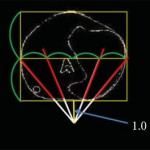The impact of the BJUI and what influences it today: does impact factor matter?
Over the last decade, urological researchers have been increasingly interested with, and driven by, the impact factor (IF) of the journal to which they are submitting. This bibliometric tool measures the way in which a journal receives citations of its articles over time. IF is calculated by dividing the number of current citations a journal receives for articles published in the two previous years, by the number of articles published in those same years.
Although IF represents a proxy for the popularity of a journal within its field, several academic and scientific organizations now use the IF to judge the value of a scientist or of a research team using it for national and international academic evaluations. This questionable policy has generated a vicious circle that has driven authors to prefer journals with higher IFs and, consequently, journal editorial boards (and publishers) to plan (soft or strong) strategies to increase this index. As a result a higher IF attracts the best articles in the field and increases the number of subscriptions to a journal. There are a number of potential biases influencing the IF values including self-citation, the number of articles published per year, and the type of articles accepted. We will explain how all of these nuances can play a significant role in calculating the IF.
Some journals subtly suggest that authors and reviewers cite articles published in their own journal within the references of newly submitted papers. This slightly dubious practice can bias the true value of the IF. Reassuringly when looking at the urological journals, the self-citation factor generally seems to play a limited role, as most journals have a percentage <10%. The policy of the BJUI Editorial Board does not support a self-citation practice. The decision to start each BJUI issue with some editorial comments (the Editor’s Choice section) is only to offer to readers the opportunity to have expert comment on the most important papers published within each edition. Indeed, the invited authors are only requested to cite the featured article and no others from the BJUI.
The number of papers published per journal volume and throughout each year is another significant factor influencing the IF value. Table 1 clearly shows the wide variability in the number of papers published from 2010–2011 in the different urologic journals. The new BJUI policy is to significantly reduce the number of published papers/year. Reflecting this decision, the BJUI Editorial Board has agreed to significantly improve the review process with the aim of selecting only the most relevant and original of the submitted manuscripts. A new rapid triage review process should allow us to select only the best 30–40% of submitted manuscripts to send to 3–4 experts for a more focused and precise review process. This mechanism has produced a significantly increased rejection rate in favour, we hope, of a better selection of topics and papers for our readership [2].
| Abbreviated Journal Title | Cites in 2012 | Items published in 2010–2011 | Impact Factor |
|---|---|---|---|
| EUR UROL | 4.662 | 445 | 10.476 |
| NAT REV UROL | 580 | 121 | 4.793 |
| PROSTATE | 1.395 | 963 | 3.843 |
| J UROLOGY | 4.864 | 1316 | 3.696 |
| J SEX MED | 2.638 | 751 | 3.513 |
| BJU INT | 3.323 | 1091 | 3.046 |
| WORLD J UROL | 673 | 233 | 2.888 |
| UROLOGY | 2.843 | 1173 | 2.424 |
| CURR OPIN UROL | 360 | 164 | 2.195 |
Bibliometric analyses have shown that review articles are cited more frequently than full original research papers. Therefore publishing good quality review articles written by expert opinion leaders in the field represents an excellent strategy to increase a journal’s IF. Although, we recognize the impact of review articles on IF, the current policy of the BJUI remains unchanged with only relatively few review articles included in each issue. As a result we will continue to give maximal attention to the clinical and basic research papers.
Finally the IF is in many ways only an index of the popularity of a journal because it equally weights citations from highly reputed journals alongside citations from more obscure journals [1]. However a journal’s true credit is also based on the prestige of the citing journals and the Eigenfactor scores is currently used to reflect this measure. Table 2 shows that the BJUI is third of all urological journals according to this less popular bibliometric tool. Another contemporary measure of impact, particularly influenced through the internet is the “Klout Score”. This system, which uses social media analytics to rank users according to online social influence via the Klout Score, giving a numerical value between 1 and 100. The BJUI currently has a score of 56, higher than its contemporaries. Therefore we can conclude that the BJUI today is a journal with a good reputation throughout the urologic field.
| Rank | Abbreviated Journal Title | Eigenfactor® Score | Impact Factor | IF rank |
|---|---|---|---|---|
| 1 | J UROLOGY | 0.08109 | 3.696 | 4 |
| 2 | EUR UROL | 0.05503 | 10.476 | 1 |
| 3 | BJU INT | 0.04248 | 3.046 | 7 |
| 4 | UROLOGY | 0.03896 | 2.424 | 11 |
| 5 | J SEX MED | 0.01738 | 3.513 | 6 |
| 6 | PROSTATE | 0.01624 | 3.843 | 3 |
| 7 | J ENDOUROL | 0.01571 | 2.074 | 15 |
| 8 | NEUROUROL URODYNAM | 0.00897 | 2.674 | 10 |
| 9 | WORLD J UROL | 0.00750 | 2.888 | 8 |
| 10 | INT J UROL | 0.00582 | 1.734 | 16 |
The editorial board of a traditional urological journal like the BJUI must take into consideration both the IF and other scoring systems as indicators of its popularity and prestige. The strategies we employ to give better bibliometric parameters should predominantly reflect an increase in the quality of the papers published as we must remember that the journal is primarily produced for the readership and not just for those who wish to publish in it [3].
Vincenzo Ficarra1, Associate Editor,
Ben Challacombe2, Associate Editor,
Prokar Dasgupta2, Editor in Chief
1Department of Experimental and Clinical Medical Sciences, Urology Unit, University of Udine, Italy. 2King’s Health Partners, London UK
References
- Franceschet M. The difference between popularity and prestige in the sciences and in the social sciences: a bibliometric analysis. J Informetr 2010; 4: 55–61
- Dasgupta P. The most read surgical journal on the web. BJU Int 2013; 111: 1–3
- Schulman CC. What you have always wanted to know about the impact factor and did not dare to ask. Eur Urol 2005; 48: 179–181
Original publication of this editorial can be found at: BJU Int 2013; 112: 873–874, doi: 10.1111/bju.12472




